Welcome to our blog on Effective Biosecurity Measures for Disease Prevention in Poultry! Ensuring the health and safety of poultry is crucial for maintaining a sustainable and profitable industry. This article will explore essential biosecurity practices that can significantly reduce the risk of diseases spreading within poultry flocks.
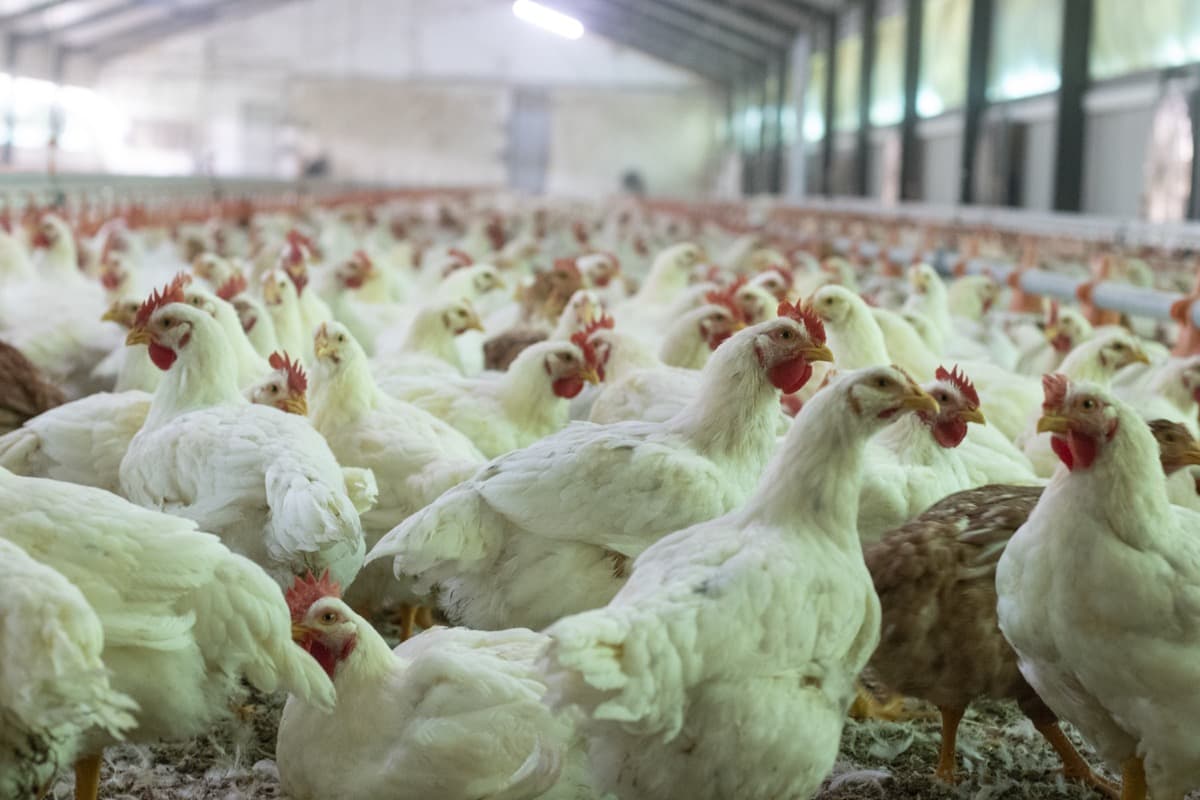
We will discuss practical steps such as controlling farm access, maintaining strict hygiene protocols, implementing vaccination programs, and monitoring flock health. By implementing these measures, poultry farmers can protect their flocks and contribute to the overall well-being of the industry.
What are Biosecurity Measures?
Biosecurity and farm hygiene on poultry farms reduce the risk of disease agents entering farms from outside sources (such as wild bird populations or other farms), moving between sheds on the same farm, spreading from one batch to the next in the shed environment, and passing from breeding flocks to their offspring via the egg.
Biosecurity measures refer to practices to prevent disease spread, including those in agriculture, livestock, and healthcare. These measures involve controlling access, implementing hygiene protocols, and monitoring health to minimize risks. By adopting effective biosecurity measures, we can safeguard against disease outbreaks and protect public health.
Why is Biosecurity Important?
- Economic reasons: Pathogens can negatively impact the health, welfare, and overall performance of poultry, leading to financial losses for farmers and the industry.
- Public health reasons: It is crucial to ensure that eggs and poultry meat are safe for human consumption, as diseases can be transmitted from animals to humans.
- Legal reasons: Compliance with mandatory national, regional, and local regulations is essential to maintain industry standards and protect against disease outbreaks.
- To effectively implement biosecurity measures, it is important to identify potential pathways for disease introduction and conduct risk assessments.
- The main pathways for pathogen spread include airborne transmission, contaminated feed or drinking water, and contact through direct or indirect means (such as equipment, vehicles, animals, and people).
In case you missed it: Innovations in Poultry Farming: Technology and Automation
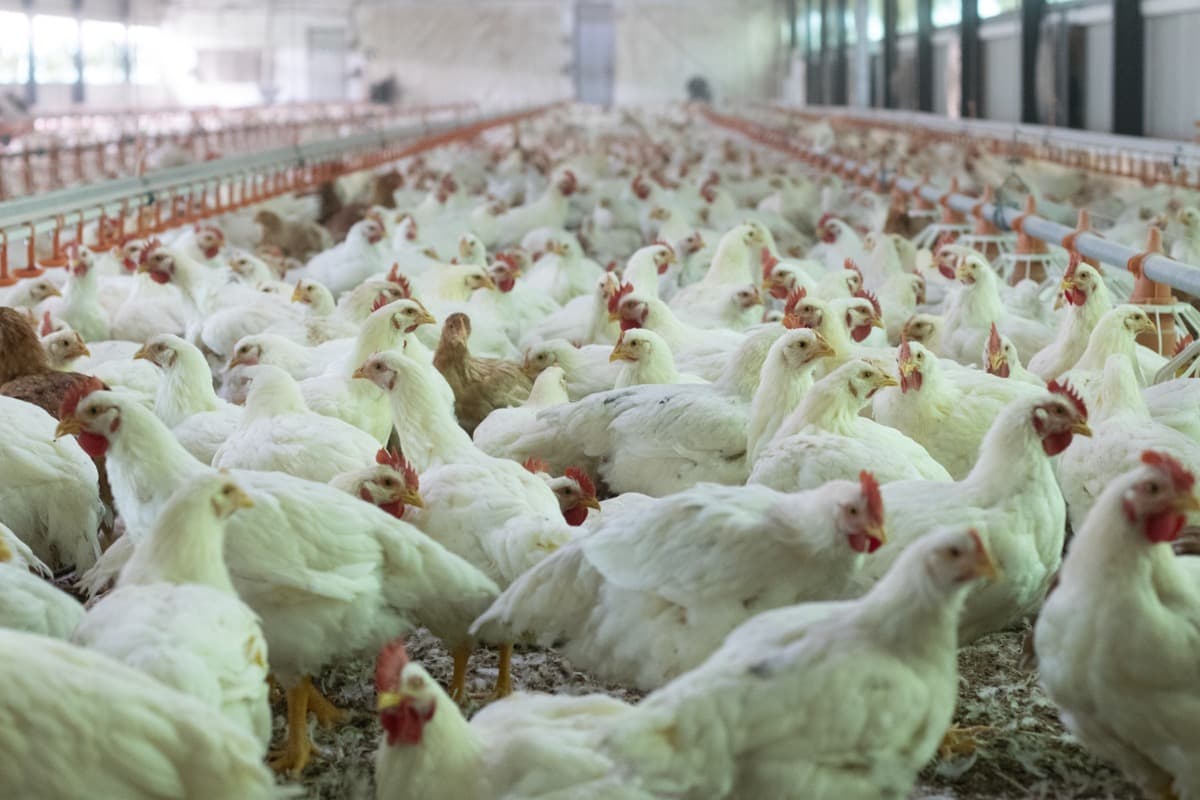
Biosecurity for Backyard Poultry Production
- Backyard poultry production is prevalent in countries and is a vital source of household food and additional income.
- Due to low biosecurity measures, there is a high risk of infectious diseases like Newcastle disease and Highly Pathogenic Avian Influenza (HPAI).
- Recommendations covered various aspects such as flock management, feed, and water management, poultry trade and stock change, poultry health management, and human risk.
- Only one general guideline specifically addressed biosecurity for backyard poultry, while the others were tailored to specific settings and were created by consultants.
- These consultant-developed guidelines were based on high standards of commercial poultry production.
- Most described principles of isolation and containment, but few focused on the impact and feasibility of measures in backyard poultry settings.
Structural Biosecurity Measures in Poultry
Structural biosecurity focuses on the design and layout of poultry farms and the equipment used. It aims to prevent unauthorized access by people and animals, both domestic and wild, to the poultry production areas.
- Selecting construction materials that allow for effective cleaning and disinfection.
- Installing perimeter fencing with a single access gate that remains closed, accompanied by “no trespassing” signs for unauthorized personnel.
- Implementing a fumigation station for vehicles entering the farm, preferably with an automatically activated disinfection arch and a disinfection basin.
- Only essential traffic should be permitted, while other vehicles should be parked outside the biosecurity zone. Feed storage silos should be located near the perimeter fence for easy filling and reduced risks associated with feed transport trucks.
- Maintaining a 1- to 2-meter-wide strip of concrete, gravel, or well-maintained grass around the perimeter of the poultry houses. This area should be free of waste, weeds, garbage, and unused equipment to minimize hiding places for vermin and nesting areas for wild birds.
- Constructing poultry houses to prevent access by birds and rodents. All possible entrances must be sealed or covered with chicken wire.
- Regular inspections should be conducted to ensure the maintenance of areas that could allow animal entry, paying close attention to risk areas such as air inlets, extractors, egg conveyors, litter pits, and drains.
- Establishing an effective drainage system to prevent the accumulation of water, which could attract migratory birds.
In case you missed it: How to Improve Feed Conversion Ratio (FCR) in Poultry Farming: Key Rules for Beginners
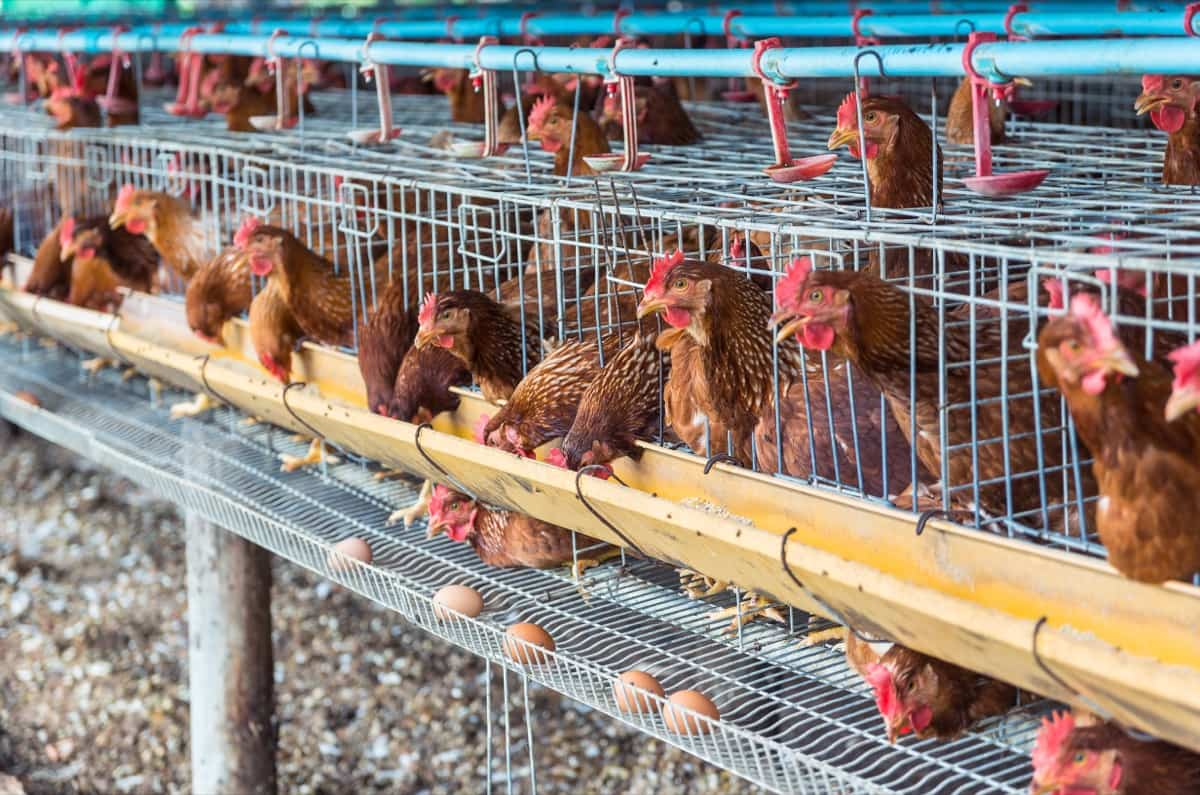
Operational Biosecurity Measures in Poultry
Operational biosecurity encompasses routine farm operations like personnel and vehicle entry, disinfection, pest control, and waste disposal. These operations should be clearly outlined in the farm’s operating procedures manual. Proper disposal of farm waste is essential, adhering to local environmental regulations. Dead birds should ideally be stored in freezers or containers secure from water, rodents, and wildlife until removal or disposal.
Drinking water for birds and water used in cooling systems should meet sanitary standards. Installing an effective water treatment system is recommended to ensure water quality. Water tanks should be kept closed to prevent the attraction of wild birds, which can contaminate the water with undesirable microorganisms.
The feed can be a source of pathogen transmission. Feed mills should follow good manufacturing practices to minimize the risk of contamination. Various treatments, such as chemical or thermal methods, can reduce disease introduction through feed. Silos should be kept closed to prevent on-farm contamination and feed spillage should be promptly cleaned.
A comprehensive pest control program is crucial to managing rodents, wild birds, flies, mites, and beetles. Bait stations should be strategically placed along house walls and areas with high rodent activity. Regular checks and bait replenishment are necessary, and detailed records should be maintained.
Equipment exchange between facilities can facilitate disease introduction or spread. Farms should strive to be self-sufficient in mobile equipment. If equipment exchange is unavoidable, thorough cleaning and disinfection should be conducted before entering the house. Only necessary equipment should be stored, maintaining cleanliness to discourage rodent breeding.
Staff and Visitors Effective Measures Disease Prevention in Poultry
- People entering the farm, including farm employees, veterinarians, truck drivers, intervention teams, and external workers, are the most common source of disease transmission.
- Visits should be minimized, allowing entry only if strictly necessary, and unauthorized persons must be excluded.
- Each farm, ideally each house, should have a single access point and a well-designed changing room with a clear separation between the “dirty zone” and “clean zone.”
- The dirty area should have facilities like clothes racks, showers, or sinks with bactericidal soap for sanitizing hands.
- The clean area should provide clean clothing (coveralls, disposable caps, or head coverings), clean footwear, and a footbath with disinfectant.
- Footbaths should be properly managed, cleaned daily, and refilled with fresh disinfectant to prevent contamination.
- The soles of the shoes should be brushed before entering the footbath and cleaned after each visit.
- Farm personnel should avoid contact with other poultry or wild birds, strictly follow clothing and footwear guidelines for the clean area, and regularly wash and disinfect their hands.
- Dust on hands, hair, and clothing can carry disease-causing microorganisms between farms, so visiting different flocks should follow a sequence from youngest and healthiest to older or lower biosecurity flocks.
- Changing rooms should have mandatory showers for all visitors, and farm employees should preferably take a full shower before entering, especially after being exposed to risky situations.
- Visitors and service personnel should sign a visitor log, enabling tracking in case of health problems and allowing the farm owner to inform recent visitors about confirmed diseases.
In case you missed it: Strategies for Maximizing Egg Production in Your Chicken Farm: Tried and Tested Strategies
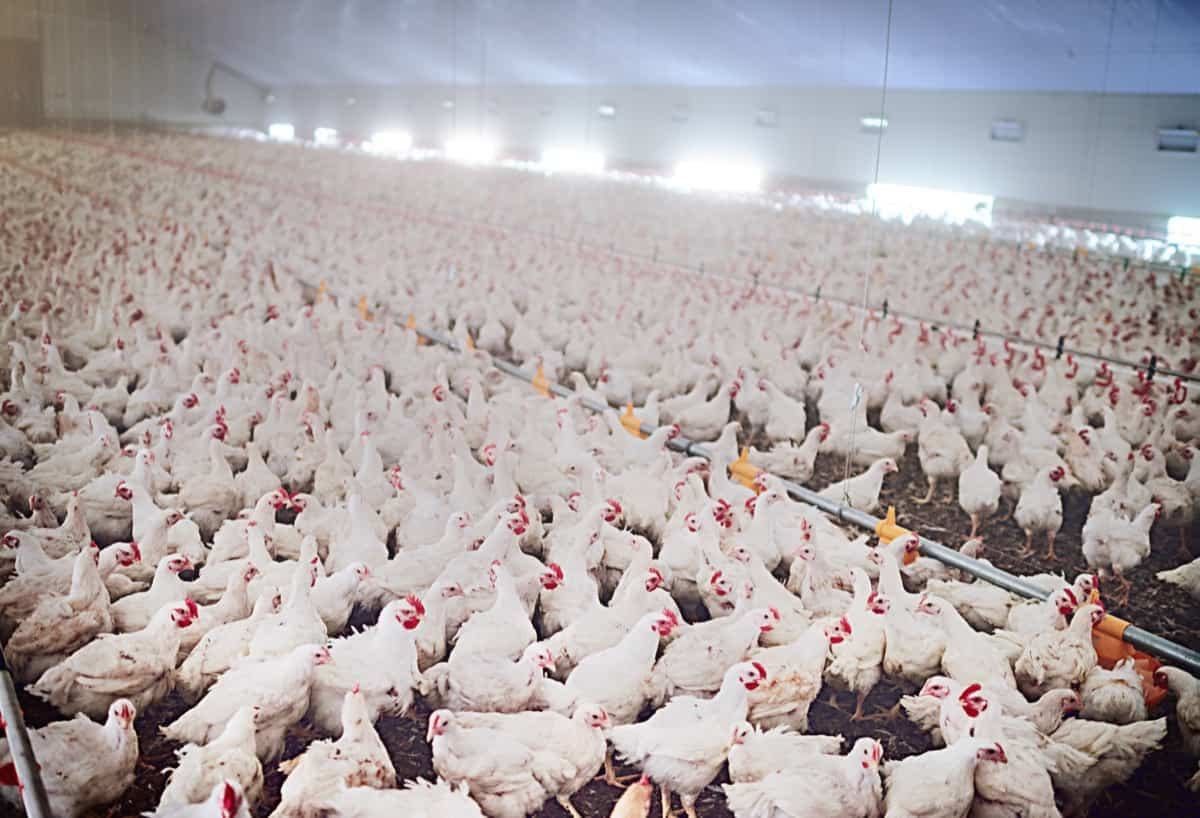
Cleaning and Disinfection for Effective Disease Prevention in Poultry
Removal of Waste and Preparation
- Remove live animals, dead animals, feed scraps, poultry manure, litter, and feathers.
- Dismantle equipment and use insecticides or rodent baits.
- Flush the drinking water circuit, refill it with detergent, and descaling solutions.
- Soak surfaces with detergent solutions and perform manual cleaning.
Pressure Washing and Equipment Cleaning
- Use a pressure washer with hot water and detergent for internal surfaces, including ceilings, walls, and floors.
- Clean all equipment and dismountable material.
Disinfection
- Spray the disinfectant solution on all washed surfaces and equipment.
- Clean water tanks and pipes to eliminate biofilm.
- Conduct a new round of disinfection.
- Inspect the effectiveness of cleaning and disinfection.
- Perform final fumigation.
Biosecurity Measures for Backyard Poultry
Separate and Clean Living Areas
- Avoid mixing birds of different species or ages to prevent disease transmission.
- Ensure cleanliness and dryness of litter to prevent pathogen development.
Implement Routine Biosecurity Practices
- Maintain basic record sheets for monitoring flock health.
- Follow isolation, traffic control, and sanitation measures to prevent disease outbreaks.
- Avoid sharing tools and equipment or accepting birds from neighbors.
Prevent Contact with Wild Birds and Household Pets
- Enclose birds to reduce contact with pathogen-carrying animals.
- Ensure household pets do not come into contact with the flock.
- Disinfect hands, clothing, and shoes after contact with other livestock and pets.
Choose Appropriate Sanitation Products
- Consider the surface type when selecting disinfectants.
- Phenols are effective in organic environments, while hypochlorites and iodophors are suited for processing areas.
- Seek professional advice for the best sanitizer for specific production needs.
Implement Effective Pest Control
- Use baits to control rodents attracted to poultry feed.
- Ensure proper fencing and sanitization to prevent pests from entering.
In case you missed it: Maximizing Efficiency: How to Optimize Chicken Farm Operations
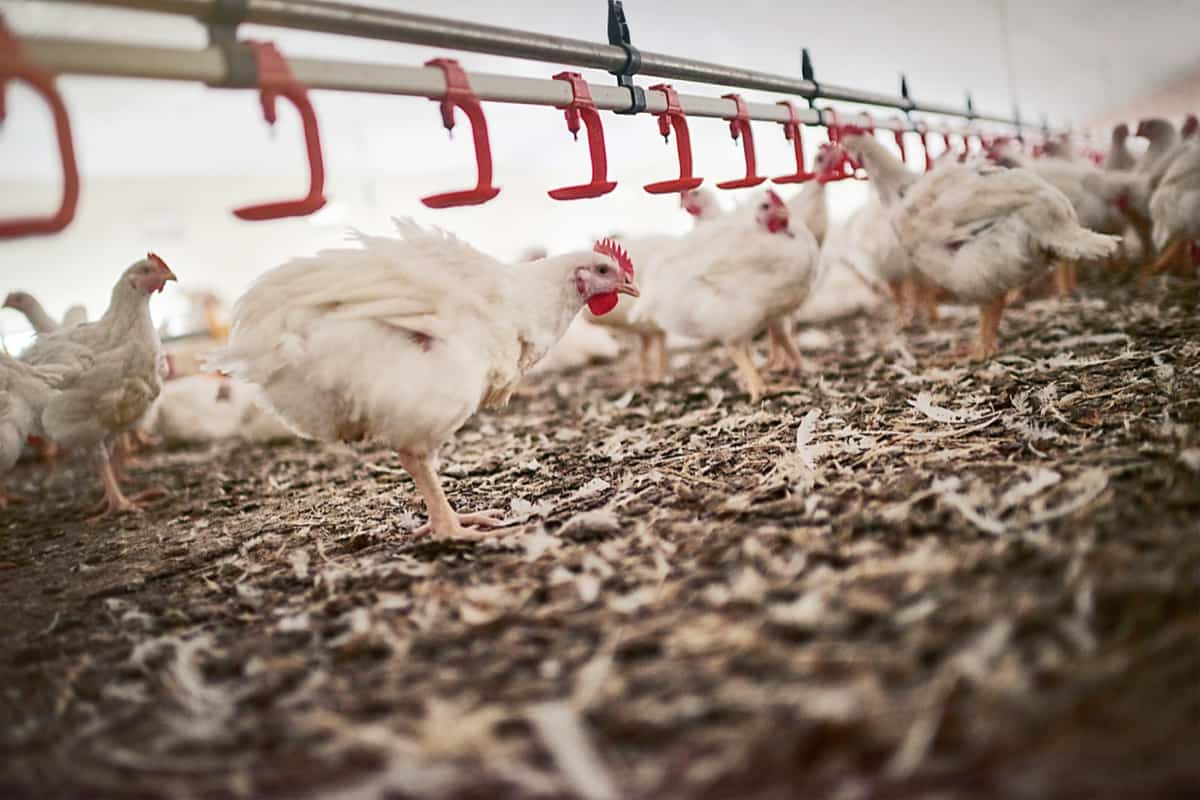
Early Detection and Response
- Monitor flock for symptoms like decreased appetite, abnormal egg production, swelling, and discharges.
- Take immediate action, including quarantining affected birds and contacting a veterinarian or poultry expert.
Minimize Human Movement Risks
- Use signage, gates, and foot-washing baths to discourage unauthorized entry.
- Provide overalls and boots for visitors and service providers.
- Minimize vehicle movements and wash down vehicles before entry.
Prevent Contact with Wild Birds
- Use wire netting to bird-proof sheds.
- Prohibit keeping birds as pets and discourage wild bird visits.
- Sanitize water sources if wild birds could contaminate them.
Biosecurity Measures for the Prevention of Diseases
- Protecting poultry flocks from disease-causing microorganisms is crucial for commercial poultry production.
- Introducing highly pathogenic and contagious diseases can severely affect bird health, welfare, and the producer’s economy.
- Regions with a high concentration of large commercial poultry flocks face increased disease introduction and transmission risks.
- Regardless of farm size, poultry companies, and individual producers must implement biosecurity measures to prevent disease spread.
- Biosecurity is a joint responsibility of the government and the industry.
- Various resources are available to assist poultry producers in developing biosecurity plans, including national farm biosecurity manuals and technical manuals specific to egg production, chicken growers, the duck industry, exhibition poultry, and water biosecurity for poultry production.
- Contract poultry growers should adhere to their company’s biosecurity protocols and work closely with veterinarians and service personnel.
- A farm-specific risk assessment is crucial to identify risks at each phase of farm operations.
- Developing a farm-specific biosecurity plan is an effective management tool to minimize the risk of introducing infectious diseases into poultry flocks.
- Disease agents can spread between poultry flocks through contaminated equipment, vehicles, clothing, footwear, infected animals (wild birds, insects, rodents, pets), contaminated air, and water sources such as dams or creeks used for drinking or cooling.
How Biosecurity Procedures Can Protect Your Poultry
Restrict Farm Visitors
- Fence the bird-keeping area and post restricted entry signs.
- Limit visitors to essential personnel.
- Provide protective equipment and ensure hand hygiene.
- Use footbaths with disinfectant at poultry house entrances.
- Maintain one-directional traffic flow through poultry houses.
- Educate employees and the community about biosecurity measures.
Limit Visitations to Other Poultry Farms
- Avoid unnecessary visits to other farms.
- Shower and wear clean protective clothing before entering.
- Clean and disinfect vehicles and equipment.
- Clean and change clothes before returning to your farm.
Exclude Pets from Poultry Houses
Do not allow dogs, cats, or other pets inside.
Control Rodents and Insects
- Consult with pest control experts for effective programs.
- Use traps and approved chemicals to eliminate pests.
In case you missed it: How this Farmer Made 24 Lakh Profit from Country Chicken Farming – A Success Story
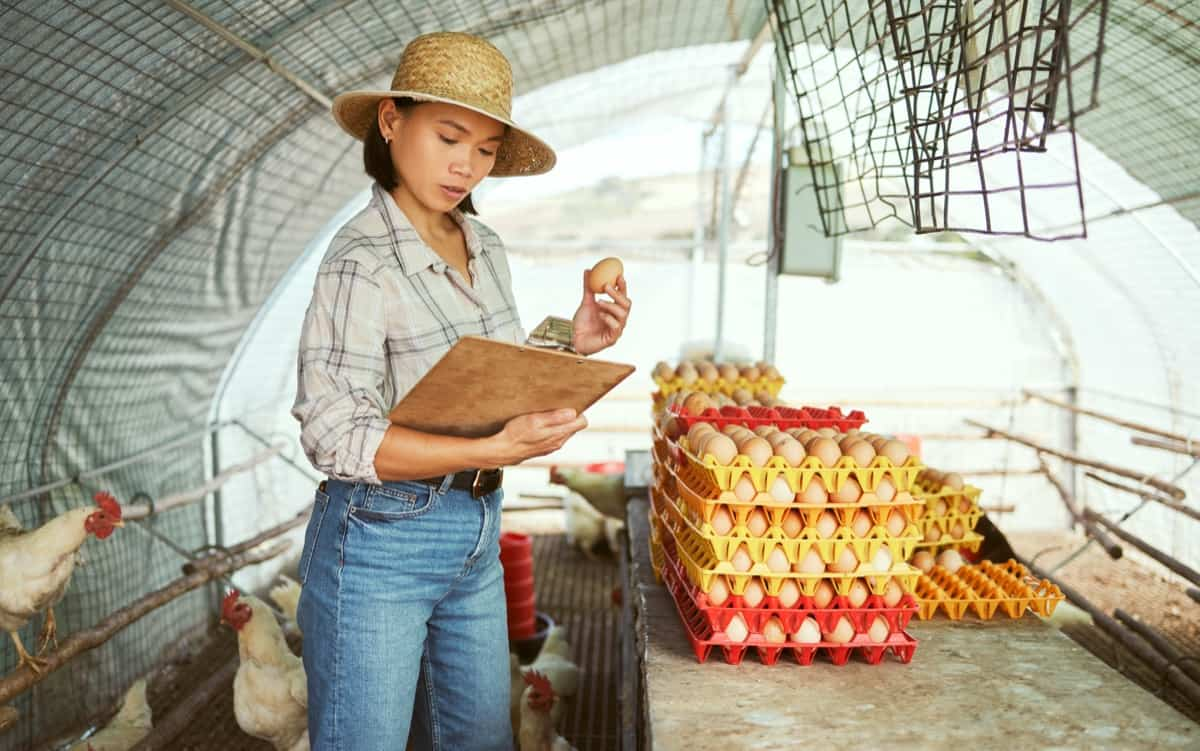
Avoid Contact with Non-Commercial and Wild Birds
- Minimize contact with unvaccinated or unhealthy birds.
- Discourage employees from keeping poultry at home.
- Inform neighbors about the importance of reporting sick birds.
Maintain Clean Surroundings
- Cut grass and remove old equipment or rubbish.
- Clean spilled feed to prevent the attraction of wild birds and pests.
Properly Manage Dead Birds
- Collect and dispose of dead birds daily.
- Report increased mortality or health issues promptly.
Conclusion
Implementing effective biosecurity measures is crucial for disease prevention in poultry. From proper cleaning and disinfection protocols to managing staff and visitor access, these measures help reduce the risk of introducing and spreading diseases, ensuring healthier flocks and sustainable poultry production.
- Types of Pesticides Used in Agriculture: A Beginner’s Guide
- Economical Aquaculture: A Guide to Low-Budget Fish Farming
- 15 Common Planting Errors That Can Doom Your Fruit Trees
- How to Make Houseplants Bushy: Effective Tips and Ideas
- Innovative Strategies for Boosting Coconut Pollination and Yield
- Pollination Strategies for Maximum Pumpkin Yield
- The Complete Guide to Chicken Fattening: Strategies for Maximum Growth
- Natural Solutions for Tulip Problems: 100% Effective Remedies for Leaf and Bulb-Related Issues
- Revolutionizing Citrus Preservation: Towards a Healthier, Greener Future
- Natural Solutions for Peony Leaf and Flower Problems: 100% Effective Remedies
- Maximizing Profits with Avocado Contract Farming in India: A Comprehensive Guide
- Natural Solutions for Hydrangea Problems: 100% Effective Remedies for Leaf and Flowers
- The Ultimate Guide to Choosing the Perfect Foliage Friend: Bringing Life Indoors
- From Sunlight to Sustainability: 15 Ways to Use Solar Technology in Agriculture
- The Ultimate Guide to Dong Tao Chicken: Exploring from History to Raising
- The Eco-Friendly Makeover: How to Convert Your Unused Swimming Pool into a Fish Pond
- Mastering the Art of Delaware Chicken Farming: Essentials for Healthy Backyard Flocks
- 20 Best Homemade Fertilizers for Money Plant: DIY Recipes and Application Methods
- How to Craft a Comprehensive Free-Range Chicken Farming Business Plan
- Brighten Your Flock: Raising Easter Egger Chickens for Beauty and Bounty
- How to Optimize Your Poultry Egg Farm Business Plan with These Strategies
- Subsidy for Spirulina Cultivation: How Indian Government Schemes Encouraging Spirulina Farmers
- Ultimate Guide to Raising Dominique Chickens: Breeding, Feeding, Egg-Production, and Care
- Mastering the Art of Raising Jersey Giant Chickens: Care, Feeding, and More
- Ultimate Guide to Raising Legbar Chickens: Breeding, Farming Practices, Diet, Egg-Production
- How to Raise Welsummer Chickens: A Comprehensive Guide for Beginners
- How to Protect Indoor Plants in Winter: A Comprehensive Guide
- Ultimate Guide to Grow Bag Gardening: Tips, Tricks, and Planting Ideas for Urban Gardeners
- Guide to Lotus Cultivation: How to Propagate, Plant, Grow, Care, Cost, and Profit
- Agriculture Drone Subsidy Scheme: Government Kisan Subsidy, License, and How to Apply Online
- Ultimate Guide to Raising Araucana Chickens: Breed Profile, Farming Economics, Diet, and Care
- Bringing Hydroponics to Classroom: Importance, Benefits of Learning for School Students
- Ultimate Guide to Raising Polish Chickens: Breed Profile, Farming Economics, Diet, and Care
- Ultimate Guide to Raising Australorp Chickens: Profile, Farming Economics, Egg Production, Diet, and Care
- Silkie Chicken Farming: Raising Practices, Varieties, Egg Production, Diet, and Care
- Sussex Chicken Farming: Raising Practices, Varieties, Egg Production, Diet and Care